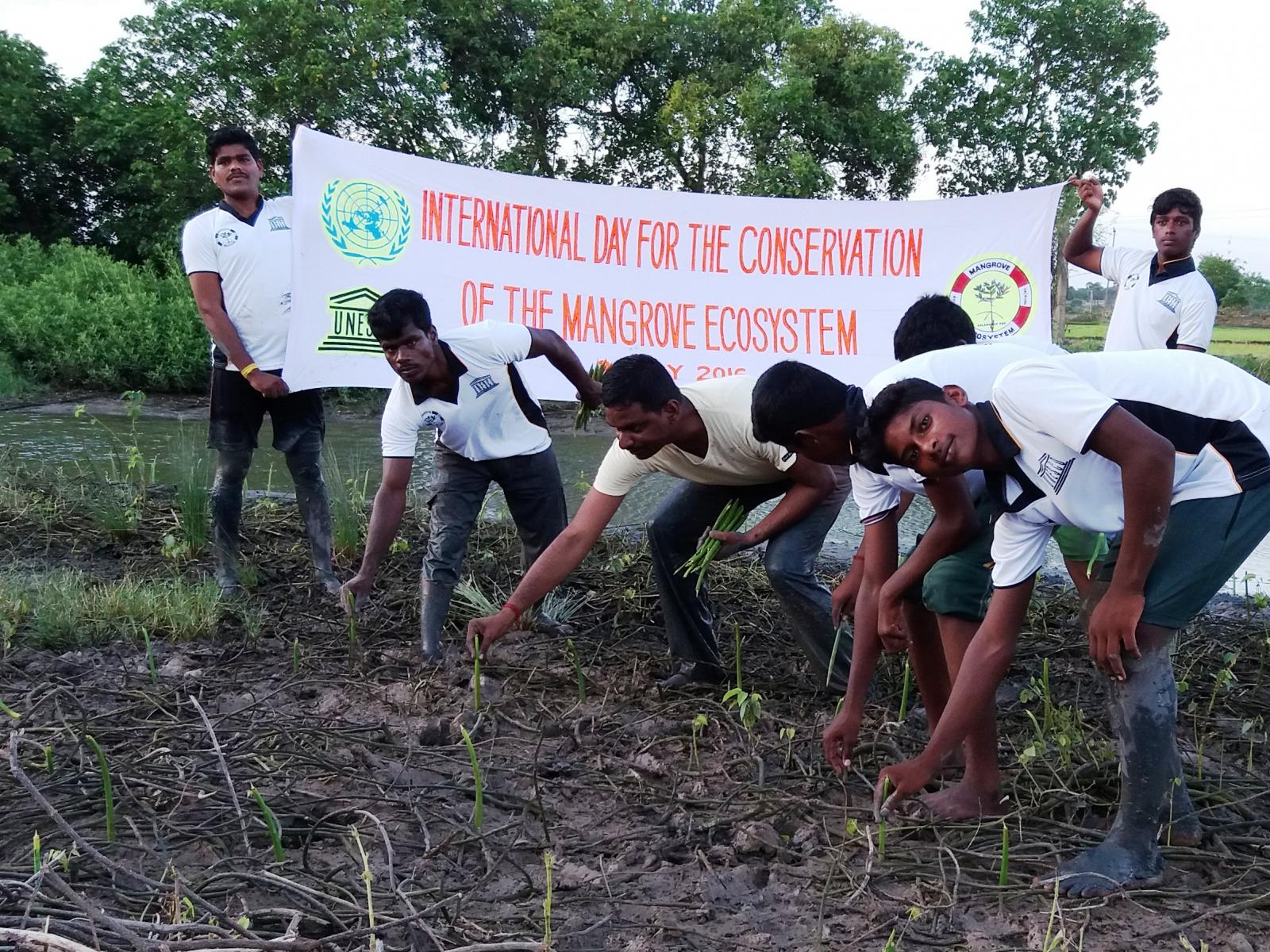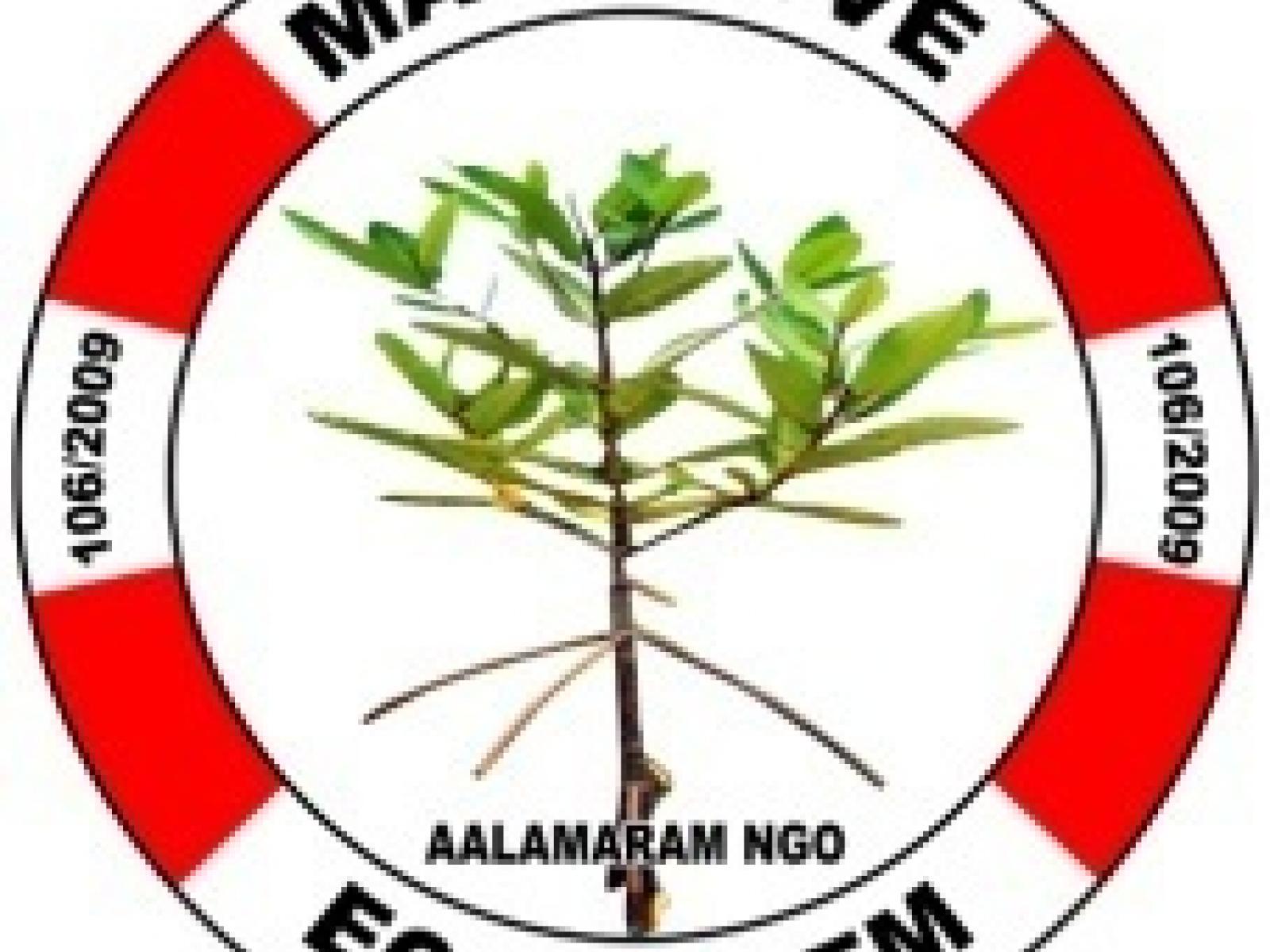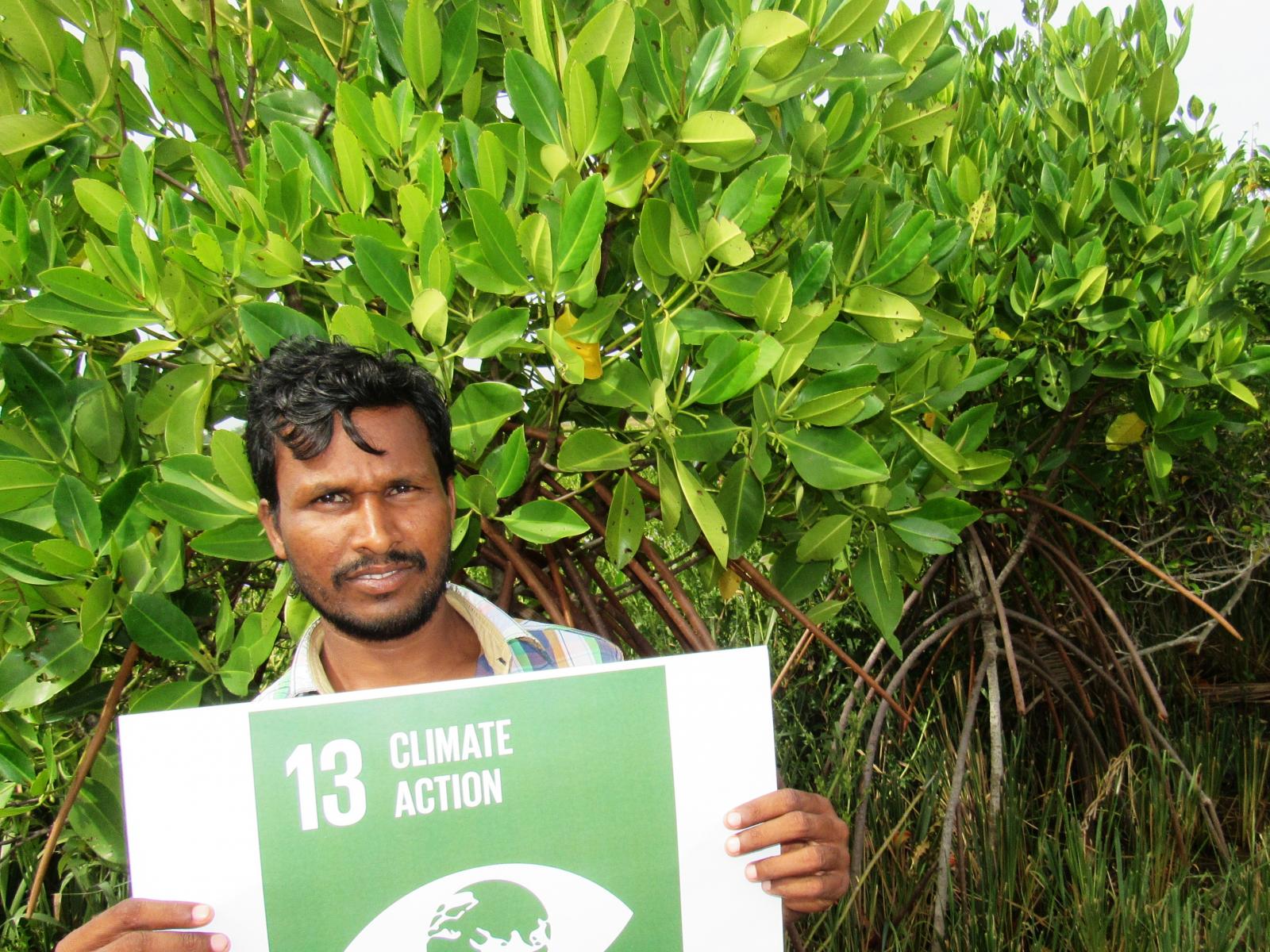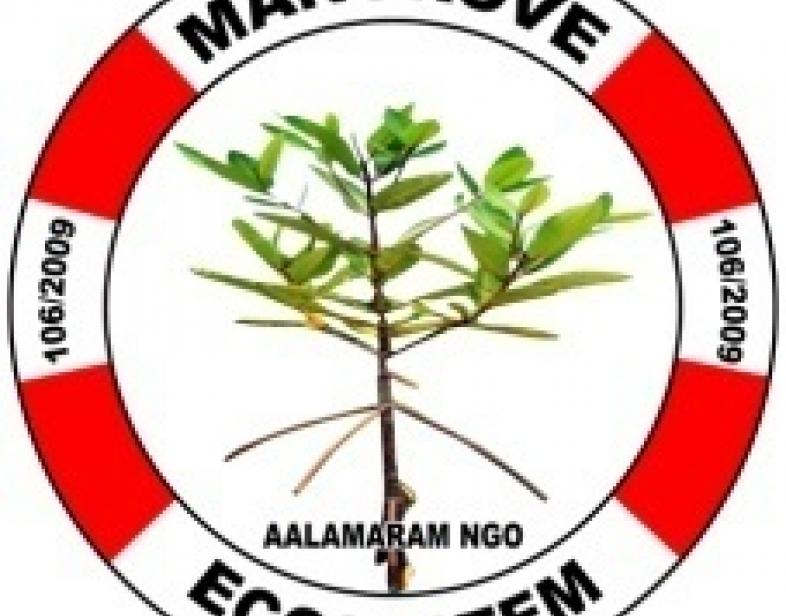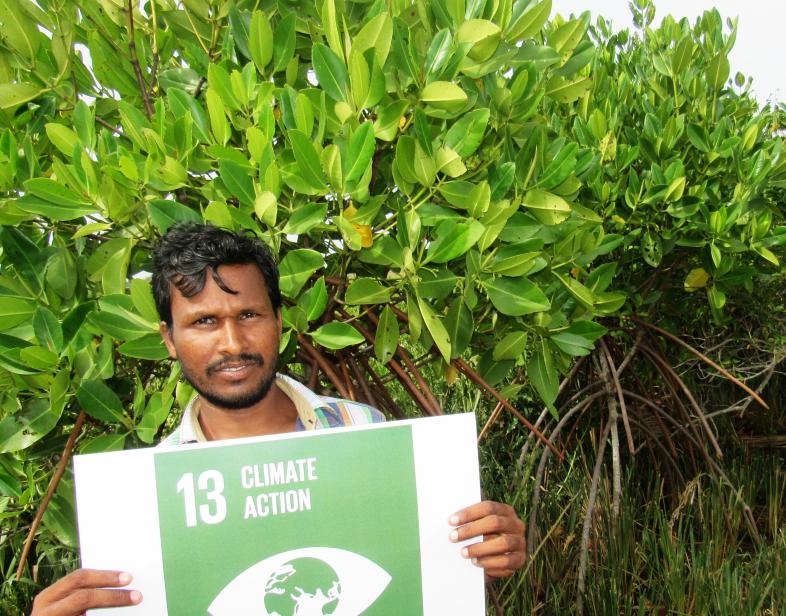An Overview Of Our Solution
behaviour changes can bring in setrights in climatic changes. The current irregularities in the climate cycle are all due to the human mis-behaviour towards our mother earth. To set this back in form, behavioural changes should happen in the minds of mankind. aalamaram ngo is operating with the coastal area issues by constantly planting and taking care of the mangroves. detailed research by the team AALAMARAM NGO, it was decided by them to first protect the mangroves which was almost in extinction. The volunteers then started procuring seeds by pooling funds by themselves and planting them along the marshy coasts of the backwaters. It worked out wonders and acted as barriers against soil erosion. They mainly became the oxygen suppliers.
- Population Impacted: n/a
- Continent: Asia
Context Analysis
Mangrove ecosystems are threatened by climate change.Sea level rise the greatest threat to mangroves.Most mangrove sediment surface elevations not keeping pace with sea-level rise. The Indian Oscan Pichavaram mangroves have been demonstrated to be at high risk substantial reductions. There is less certainty over other climate change outcomes and mangrove responses.Coastal planning can adapt to facilitate mangrove migration with India Sea-level rise. Management of activities within the catchments that affect long-term trends in the mangrove sediment elevation. Major earthquake and tsunami in India 2004. Cuddalore District 54 coastal villages highly damages and loss of death. But Pichavaram mangroves arounding 12 villages safe card .The “ Sipcot” Cuddalore is itself a threat to the Eco System, Because all the companies have Started chemical industries in this region. Their untreated effluents are a threat to the living species.
Describe the technical solution you wanted the target audience to adopt
More research is needed on assessment methods and standard indicators of change in response to effects from climate change, while regional monitoring networks are needed to observe these responses to enable educated adaptation measures can off set anticipates mangroves losses and improve resistance and resilience to climate change. Coastal planning can adapt to facilitate mangrove migration with India Sea-level rise.Due to SIPCOT chemical industries the pollution is wide spread Hence we insisted upon to treatment of effluents and put it in the deep sea. So that the livelihood of Fisherman community do not suffer. Pumping out of water lead to water depletion and intrusion of sea water which is a threat to the living being cultivable lands are becoming barren landsIt is a team work. The enhanced conservation and restoration of mangroves and its associated sequestration of atmospheric carbon, contributes to mitigating global warming therby benefiting the entire planet.
Type of intervention
Describe your behavioral intervention
MANGROVE FORESTS are not only important but also very crucial for the coastal areas. Since estuarine areas are highly populated areas, the slightest ecological imbalance will take a heavy toll. They play a vital role in stabilizing these areas. we negate all benefits of mangroves as forests, their value as "protector of shore-line" is enough to convince us for planting and conserving them. Mangroves can possibly provide a gene bank for cultivating salt tolerant species of crops which could be our future resource.whPeople should know the importance of planting mangroves , especially the welfare of the costal folk, into consideration, plant mangrove saplings along the bank of Uppanar River.The industrial area of Cuddalore, SIPCOT is located on the bank and wishing that the mangroves would purify the water and the air polluted by these industries.. Motivated by the interest showed by the villagers in protecting the saplings, the office bearers of the NGO also planned to expand this project to the other nearby coastal villages too.But unfortunately, every body’s dreams about the mangrove forests were shattered by the historic downpours.and the storm that ravaged the Cuddalore district in the months of November and December.More than one lakh saplings that were planted for a stretch of 15 km, and other instruments like small boats etc. used in the planting and maintaining of the mangroves, whose worth estimated more than Rs 10 crore were pathetically destroyed by the floods.
As needed, please explain the type of intervention in more detail
"Save the Nature , Save the Human Life". India’s wildlife is both rich anWildlife includes all non-domesticated plants, animals, and other organisms. Wildlife cabbe found in all ecosystems. Deserts, rain forests, coastal area plains, and other areas including the most developed urban sites all have distinct forms of wildlife. While the term in popular culture usually refers to animals that are untouched by human factors, most scientists agree that wildlife around the world is impacted by human activities.We can help in conserving wildlife by saving natural resources, recycling plastic wastage, vowing not to use any animal products like leather and other articles, and mainly by developing a deed sense of compassion to the darlings of nature.
Describe your implementation
Mangrove ecosystems are threatened by climate change. We review the state of knowledge of mangrove vulnerability and responses to predicted climate change and consider adaptation options, of all the climate change outcomes, relative sea-level rise may be the greatest threat to mangroves. Most mangrove sediment surface elevations are not keeping pace with sea-level rise, although longer term studies from a larger number of regions are needed. Rising Sea-level will have the greatest impact on mangroves experiencing net lowering in sediment elevation. Where there is limited area for landward migration. Propagating the impact of pollution to the Eco system in general restoring the ponds, lakes and desalting them is carried out. Due to SIPCOT chemical industries the pollution is wide spread Hence we insisted upon to treatment of effluents and put it in the deep sea. So that the livelihood of Fisherman community do not suffer.I am hailing from a coastal village called thigavalli 22 km away from cuddalore the district HQS Fishing; agricultural are the two livelihood activities. “Uppanar” is the river flowing there. Therefore the chances of Sea erosion, soil erosion are quite common during floods and cyclone. To to protect the people from loss of property and life “Aalamaram” has undertaken the project of planting “Mangroves” is the coastal belt and river beds. It is a continuo’s process. There is no end to it.
•Pumping out of water lead to water depletion and intrusion of sea water. Hence it is a threat to the living The future of India in youth. They should be made aware of the existing problem and low best they can contribute to save the planet from it dangers. It is a team work. So the youth of the world should unite to salve problem of coastal degradation.
•The enhanced conservation and restoration of mangroves and its associated sequestration of atmospheric carbon, contributes to mitigating global warming thereby benefiting the entire planet.
External connections
The NGO Aalamaram has 20 volunteers, who will work continuously or on shift basis along with local workforce.
It is decided to involve civil societies other NGO, NCC, NSS and social activist.
The department of Marine Biology at Parangipettai will be roped in to get scientific assistance.Situ Biodiversity conservation can be done as following.
*By forming Gene banks: In this store seeds, sperm & ova at extremely low temperature and humidity.
*It is very helpful to save large variety of species of plants & animals in a very small space e.g. sperm and ova banks, seed banks.
*Forming Zoo and botanical garden for research purpose and to increase public awareness collecting living organisms for aquaria, zoos and botanic gardens.
*Collections of in vitro plant tissue and microbial culture.
* Captive breeding of animals and artificial propagation of plants, with possible reintroduction into the wild.
Who adopted the desired behaviors and to what degree?
The NGO AALAMARAM was instituted in the year 2009 with an intention of implementing various welfare activities by the energetic rural youth of different villages of the Cuddalore district. The team strongly believed that various issues can be set right by revolts, agitation and protests, but not environmental threats, especially the air pollution. So, they decided to contribute to the protection and purification of the environment by a novel initiative of “afforesting the mangroves along the coasts near the villages. Researches tell that mangrove grooves emit oxygen all 24 hours of the day and so the team plunged into planting of mangroves, which was not an easy task for them. Without taking any grants from the Government in any form, the team enthusiastically planted more than 1 laks 50,000 Thousand saplings in the last 7 years. Meanwhile they faced many hardships like the flood which destroyed many mangrove tree.
How did you impact natural resource use and greenhouse gas emissions?
Magnitude and risk of disasters are directly proportional to the sensitivity and inversely proportional to degree of resilience of exposed community. To mitigate the ill effects of hazards, a thorough understanding of the vulnerability causing factors and coping capabilities is required for which vulnerability analysis is essential. We, AALAMARAM Organisation was doing seedling, Planting, and regularly monitoring the planted saplings This mangrove forests vitally important to coral reef and commercial fisheries as well as Coastal protection. The dense root systems of mangrove forests trap sediments flowing down rivers and off the land. This helps stabilizes the coastline and prevents erosion from waves and storms.Mangroves protect shorelines from damaging storm and hurricane winds, waves, and floods. Mangroves also help prevent erosion by stabilizing sediments with their tangled root systems. They maintain water quality and clarity, filtering pollutants
What were some of the resulting co-benefits?
Social and Spiritual Benefits
Most of the time in human history, conservation means protecting nature for the spiritual gifts it provides and protecting sacred places in local landscape. The biodiversity effects on cultural development can be shown by heterogeneity of the world’s mythology, folk dances and folk art which contribute to the richness of literature and global arts.Uniqueness of each habitat is presented by their animals and plants that why each country and state have their flagship animals as well as plants. Even during traveling, motivation of the peoples is to see biological diversity, different cultural and landscape. Ecotourism is travel with the aim to view, support andsustain the local cultures and its natural ecosystem.Support from ecotourism can be very helpful to reduce habitat destruction as well as to preserve endangered species. Ecotourism is travel with the aim to view, support and sustain the local cultures and its natural ecosystem.
Sustainability
Cuddalore district along the beach shore sea turtles die tragically refuge is sequential. Sea turtles survive to throw fishermen, the fishing vessel company that sea turtles are the benefits and sea turtles to protect the objective awareness of the Indian Government and the international community and organizations, along with the increasing awareness in the future of the turtles safety can be. Marine Turtle about the benefits of Aalamaram NGO set for fishermen and awareness
Return on investment
Change in participation and social interaction:
The elder and women group participating in activities on mangrove reforestation, capacity building and knowledge and experience sharing with young people made a harmonized picture in social interaction.
Change in natural environment or ecosystems, and practices in ecosystem/coastal conservation:
Mangrove reforestation was considered one of suitable approach for protection of coastal erosion in Periyakuppam and Cuddalore Port where this problem was happening.
How could we successfully replicate this solution elsewhere?
Reforestation of Mangroves, in about 10 villages in and around Sotthikuppam, Cuddalore Port and Thiyagavalli villages .
2. In the contest of Indian ocean, habitat loss is an important threat to the sustenance of coastal. Bio diversity: SIPCOT in Cuddalore is an industrial corridor. Because of its effluent release in the sea its loss of bio diversity through habitat loss is difficult to quantify. Hence necessary intervention is required for efficient treatment and avoid habitat.
3. Pollution is another serious threat to the sustenance of coastal and Marine bio diversity. Pollutants enter coastal waters main by in two forms as nutrients from domestic sewage and agricultural runoff. Excess nutrients cause entrophication and attendant hypoxia. Killing local fauna and flora. Industrial pollutants act directly as toxic substance, causing impairment in metropolies
function and eventually mortality. This will add to the existing dead zones.
